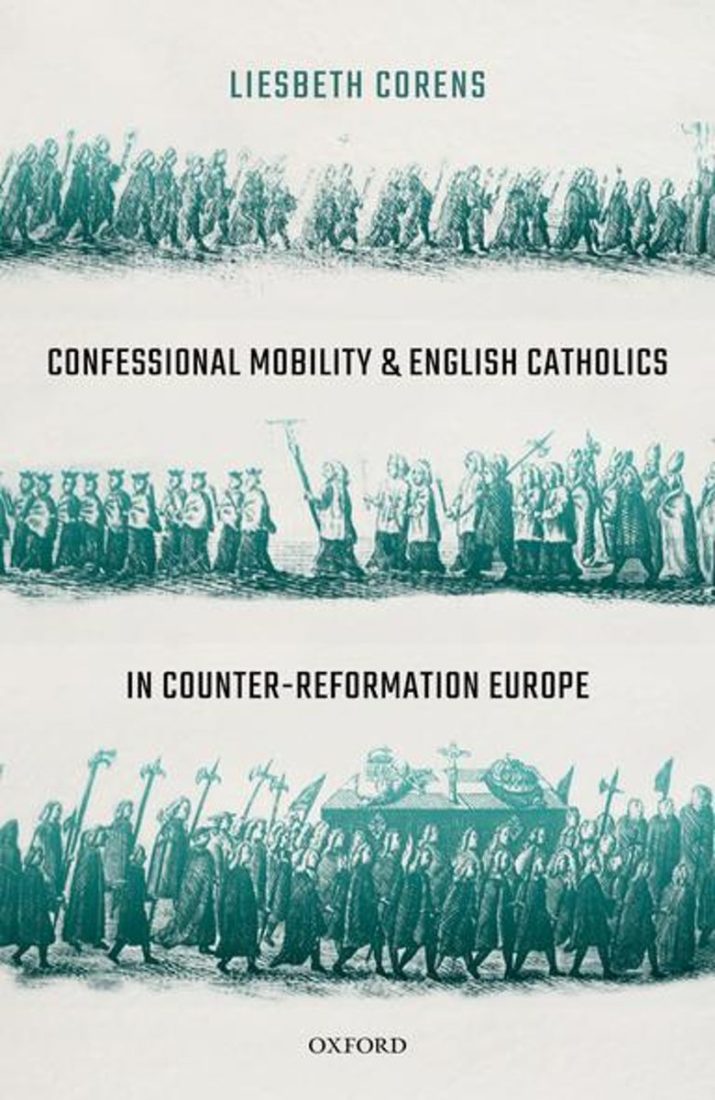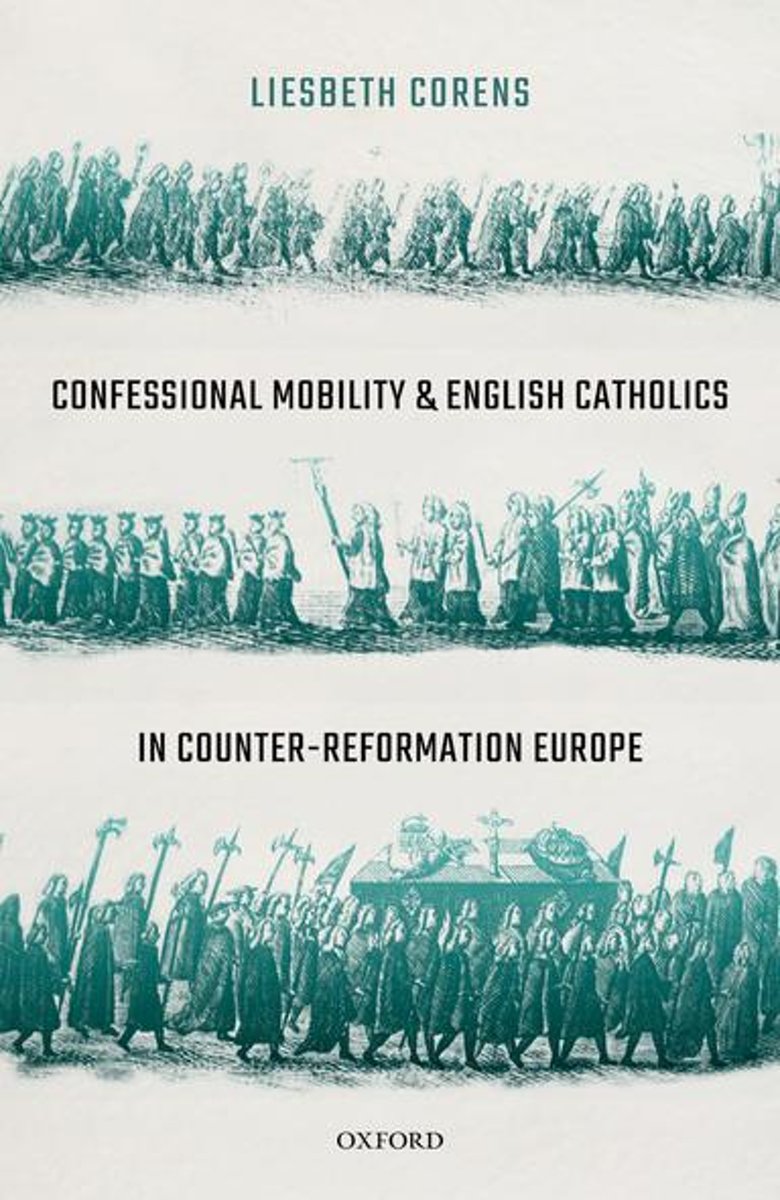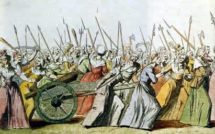
Confessional Mobility and English Catholics in Counter-Reformation Europe by Liesbeth Corens
This is part of a roundtable Studying Europe Through the Lens of European Catholicism, and our special feature, Imagining, Thinking, and Teaching Europe.

Against a backdrop of recent referendums and the mass immigration of people fleeing their homelands because of religious persecution, economic hardships, and war, there has been a historical reassessment about people travelling for similar reasons in the early modern period. In her monograph Confessional Mobility and English Catholics in Counter-Reformation Europe, Liesbeth Corens seeks to challenge the long-established historiographies that have scrutinized English Catholics leaving their homeland for religious reasons in the post-Reformation. Confessional Mobility is a study of the experiences of early modern English Catholics who crossed the Channel to engage in activities relating to their faith. This includes an analysis of Catholics travelling to Europe for pilgrimages or educational reasons, and their motivations for leaving their home country for European Catholic havens. In recent years, the study of early modern English and European Catholicism has grown, stimulated particularly by a rise in the number of publications dealing with the impact of political events, as well as the international Early Modern British and Irish Catholicism conferences. Their conferences’ published proceedings Early Modern English Catholicism: Identity, and Counter-Reformation[1] and Jesuit Intellectual and Physical Exchange between England and Mainland Europe, c. 1580-1789: “The World is our House?”[2] have sought to reassess early modern Catholicism culturally and politically.
Confessional Mobility and English Catholics in Counter-Reformation Europe focuses on the period 1660 to 1720, which covers the Restoration of Charles II to the dawn of the Enlightenment. Corens argues that these years witnessed Catholics returning to England after a “toning down” of public opinion and in the enforcement of the penal laws. The book is divided into three thematic sections: distance, mobility, and orientation, and seeks to demonstrate that through the mobility of pilgrims, Grand Tour travelers, scholars, and students, expatriate Catholics created a community without borders. Provocatively, Corens’ central argument is that we should dismiss the term “exile” when assessing the movement of English Catholics to mainland Europe. She argues that “exile” places a negative label on people and conjures up images of victimhood, while their activities abroad are granted little notice once they left their homeland. Instead, she suggests that “confessional mobility” is a better description to categorize expatriate English Catholics who made the journey across the Channel into mainland Europe, as “their mobility is accidental, not constitutive.” She proposes that if historians started using a broader term like “confessional mobility”, it would unleash broader questions about the movement of English Catholics in early modern Europe, as well as unlock new sources for our knowledge. “Confessional mobility” is thus a major theme that runs throughout the book as she uses the phrase to analyze and critique the activities of early modern English Catholics.
One of the main arguments of Confessional Mobility is that Catholic accounts of going abroad were different from Protestant narratives, which focused on exile. She emphasizes, for instance, in Chapter One—The Exile—that while English Catholics recognized that their brethren were persecuted and dislocated from much of society, Protestant polemicists painted these groups of Catholics as fugitives. Alternatively, Corens claims that Catholics who migrated to Europe saw themselves akin to the New Testament apostles and early missionaries who travelled far and wide to integrate into new communities, and to study and promote the teachings of the Catholic Church. In this vein, Corens argues that English Catholic actions abroad were centered on performing devotional practices so that they could contribute actively to developments at home, sustain English Catholicism, and keep the faith alive. This included preserving their confessional practices and maintaining their missionary travels to host nations, such as Belgium, France, the Netherlands, and Bavaria alive through writings and financial bequests. Chapter Five—The Intercessor—gives special attention to this wider spiritual community to which English Catholics contributed in early modern Europe. She points out that prayer books, primers, devotional books, and relics of saints acted as tools to help Catholics receive instructions on how to worship and to participate in the wider spiritual community when their places to worship were limited. She argues persuasively that the fact that there were many printed editions of religious texts, demonstrates how widely received these works were in the English Catholic community, and that they aided Catholics to worship in a collective salvation, as well as to uphold the memory of their ancestors. She explores this idea in Chapter Four—The Pilgrim—by analyzing the religious experiences of Catholics who travelled abroad for pilgrimages. Corens also suggests that visits to pilgrimage destinations and shrines were militant activities, as they offered a source of hope for English Catholics who suffered persecution for their faith, drawing attention to the Marian shrine of Scherpenheuvel.
Throughout Confessional Mobility, Corens emphasizes the important role of education as a dominant reason why Catholics mobilized abroad for long durations. Her research builds upon the work of Lucy Underwood in her monograph Childhood, Youth and Religious Dissent in Post-Reformation England[3], which examined Catholic childhood, education, and youth. Corens argues in Chapter Three—The Educational Traveller—that travelling abroad was a foundation in the all-round education of the Catholic laity: it prepared them to lead virtuous Catholic lives upon their return home and enabled them to instill these values upon their offspring. She suggests that the English colleges were not just places to educate young Catholic scholars, but that they also acted as beacons for English Catholics to retain a link to their homeland and to still be part of the collegial activities. She points out that Catholics participated in confraternities and sodalities (established in the English college houses), which were crucial in keeping the Catholic communities alive, as it provided a link to their former religious brothers and sisters when they returned home to England. Furthermore, in Chapter Six—The Record Keeper—Corens builds upon her previous work on Catholic archive collecting by discussing the motivations that lay behind Catholic scholars recording and researching their histories, which was done in order to keep their faith alive for future generations. She argues that these collections were creative pursuits, rather than completed products narrating their religious past, as they were designed to generate more scholarly research, assessment, and literary outputs of their religious culture.
The contentious subject of Catholic loyalty is acknowledged throughout Confessional Mobility, as is the way in which this loyalty contributed to the literary outputs produced by Catholics abroad. Catholic loyalty and oath swearing has been the topic of much historiographical debate in recent years, especially in the works of Michael Questier and Ethan Shagan.[4]Chapter Two—The Fugitive—challenges this scholarship by suggesting that previous studies have created a false gulf between loyalty and rebellion. Corens focuses on the lively intellectual discussions which took place regarding Catholics swearing alternative oaths of allegiance in the early seventeenth and early eighteenth centuries, by analyzing anti-Catholic tracts, acts, and parliamentary records in conjunction with personal miscellany. She incorporates these materials when scrutinizing English Catholics’ communication links with their brethren on the Continent. Regrettably, she neglects to acknowledge the work that has been done on alternative oaths of allegiance for the mid-seventeenth century, particularly the work of Stefania Tutino, which would have widened her scope on English-European intellectual discussions.[5] In particular, the Catholic Blackloist group, led by Thomas White, Henry Holden, Sir Kenelm Digby, and others, is a large omission, as their works had significant impact in Europe and even in colonial America, as recently demonstrated by Christopher Gillett.[6] Additionally, attention has to be drawn to the Oath of Association in 1696 (created in response to assassination plots against William III), which the author has erroneously claimed to have been sanctioned by both William III and Mary II, but which can only by attributed to William as Mary had died of smallpox in December 1694.
Confessional Mobility and English Catholics in Counter-Reformation Europe is a satisfactory account of the movement of English Catholics for cultural and academic endeavors in the later early modern period. Corens has provided an opportunity for historians to reconsider the movement of early modern Catholics into Europe and how we can assess their contribution to education and missionary practices. What cannot be denied is the vast array of sources that Corens has used in her book. The bulk of Corens’ sources have helped us to gauge the experiences of expatriate Catholics in early modern Europe, and have come from a variety of archives, predominantly those of religious orders in England and the Netherlands. What would have advanced her arguments further would be if she had engaged with some of the official legislative stances towards Catholics who went abroad, especially when the Popish Plot and the Jacobite Rebellion would have caused a change in tone towards Catholics who travelled and visited Catholic countries. Overall, her monograph reflects the growing importance of early modern Catholics travelling in Europe for reasons beyond exile, and this book will be of value to anyone interested in the educational and confessional practices of this religious minority.
Eilish Gregory is a Postdoctoral Research Associate for the Royal Historical Society and a sessional lecturer at the University of Reading. She completed her PhD at University College London in 2017 on her project entitled “Catholic sequestrations during the English Revolution, 1642-60”, which is currently being turned into a monograph. She is the author of the chapter “Catherine of Braganza’s Relationship with her Catholic Household”, in the edited collection Forgotten Queens in Medieval and Early Modern Europe: Political Agency, Myth-Making, and Patronage, eds. Valerie Schutte and Estelle Paranque (Routledge, 2018).
Confessional Mobility and English Catholics in Counter-Reformation Europe
By Liesbeth Corens
Publisher: Oxford University Press
Hardback/240 pages/2019
ISBN: 978-0-19-881243-2
References:
[1] James E. Kelly and Susan Royal (eds), Early Modern English Catholicism: Identity, and Counter-Reformation (Leiden: Brill, 2017).
[2] James E. Kelly and Hannah Thomas (eds), Jesuit Intellectual and Physical Exchange between England and Mainland Europe, c. 1580-1789: “The World is our House?” (Leiden: Brill, 2019).
[3] Lucy Underwood, Childhood, Youth and Religious Dissent in Post-Reformation England (Basingstoke: Palgrave Macmillan, 2014).
[4] Michael Questier, ‘Catholic Loyalism in Early Stuart England’, English Historical Review, Vol. 123, No. 504 (Oct., 2008), pp. 1132-1165; Ethan Shagan (ed.), Catholics and the ‘Protestant nation’: Religious politics and identity in early modern England (Manchester and New York: Manchester University Press, 2005).
[5] Stefania Tutino, ‘The Catholic Church and the English Civil War: The Case of Thomas White’, Journal of Ecclesiastical History, Vol. 58, No. 2 (Apr., 2007), pp. 232-255; Stefania Tutino, Thomas White and the Blackloists: Between Politics and Theology during the English Civil War(Aldershot: Ashgate, 2007).
[6] Christopher P. Gillett, ‘Probabilism, Pluralism, and Papalism: Jesuit Allegiance Politics in the British Atlantic and Continental Europe, 1644-50’, in Jesuit Intellectual and Physical Exchange between England and Mainland Europe, c. 1580-1789: “The World is our House?”, eds. James E. Kelly and Hannah Thomas (Leiden: Brill, 2019), pp. 235-260.
Published on June 3, 2020.




